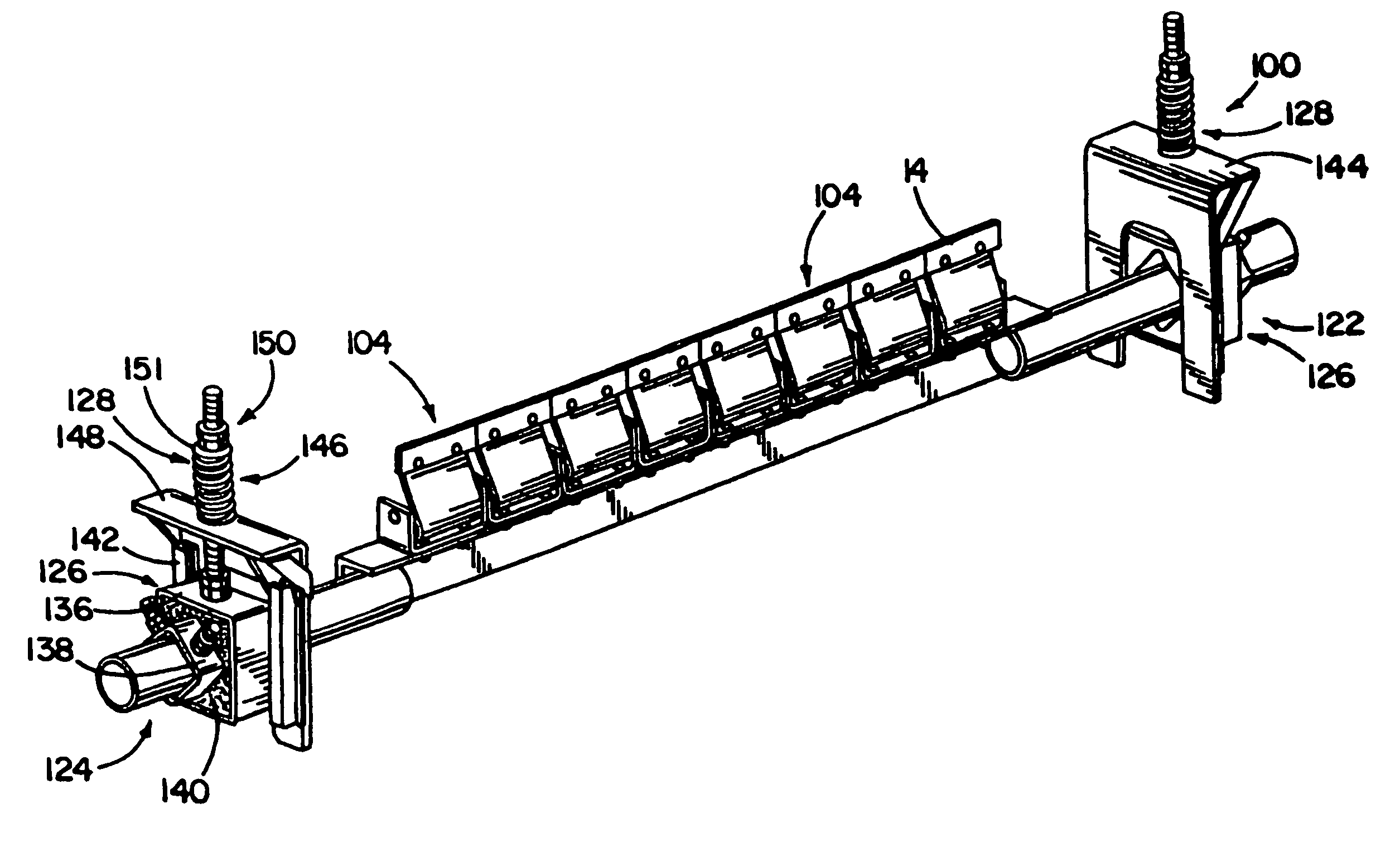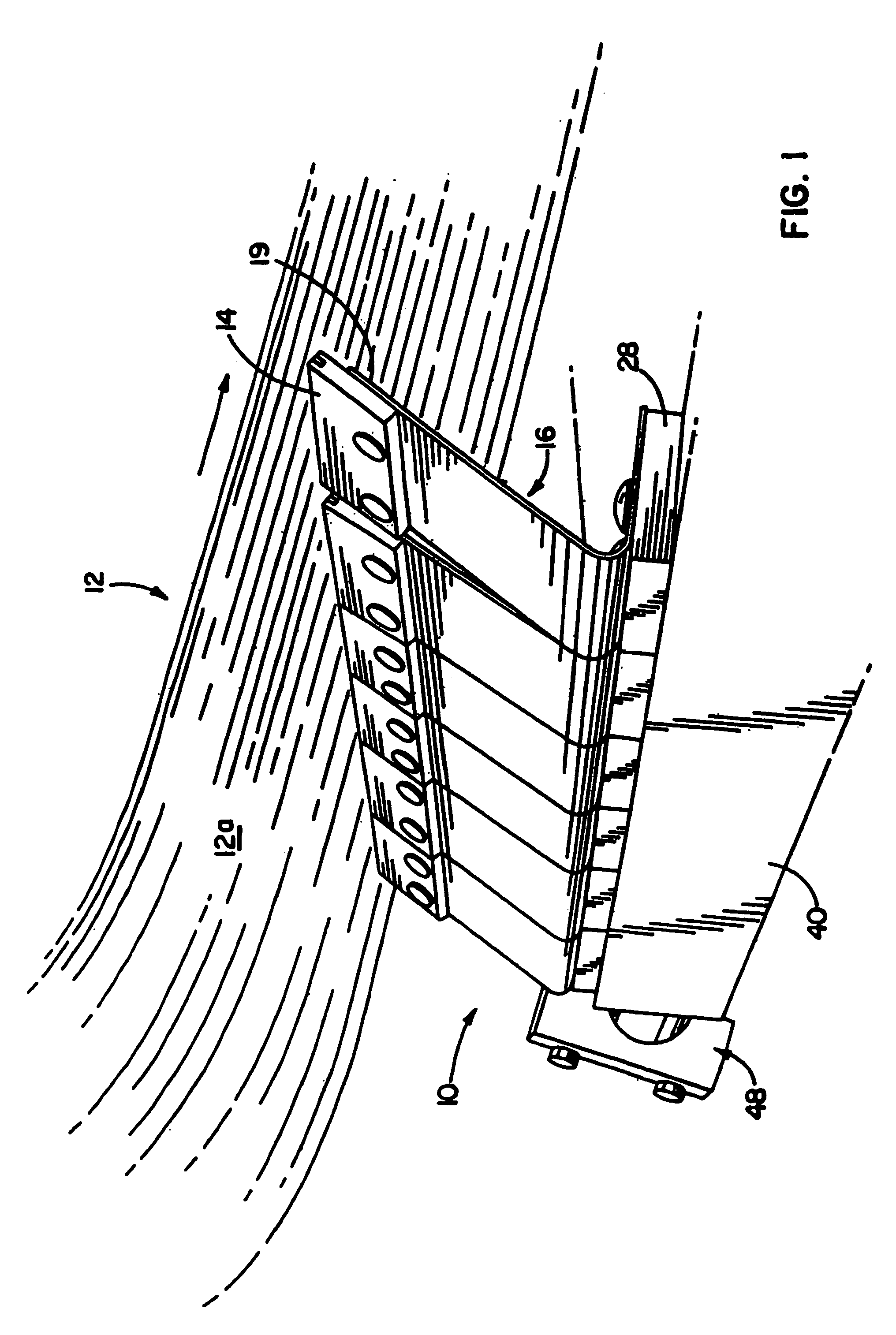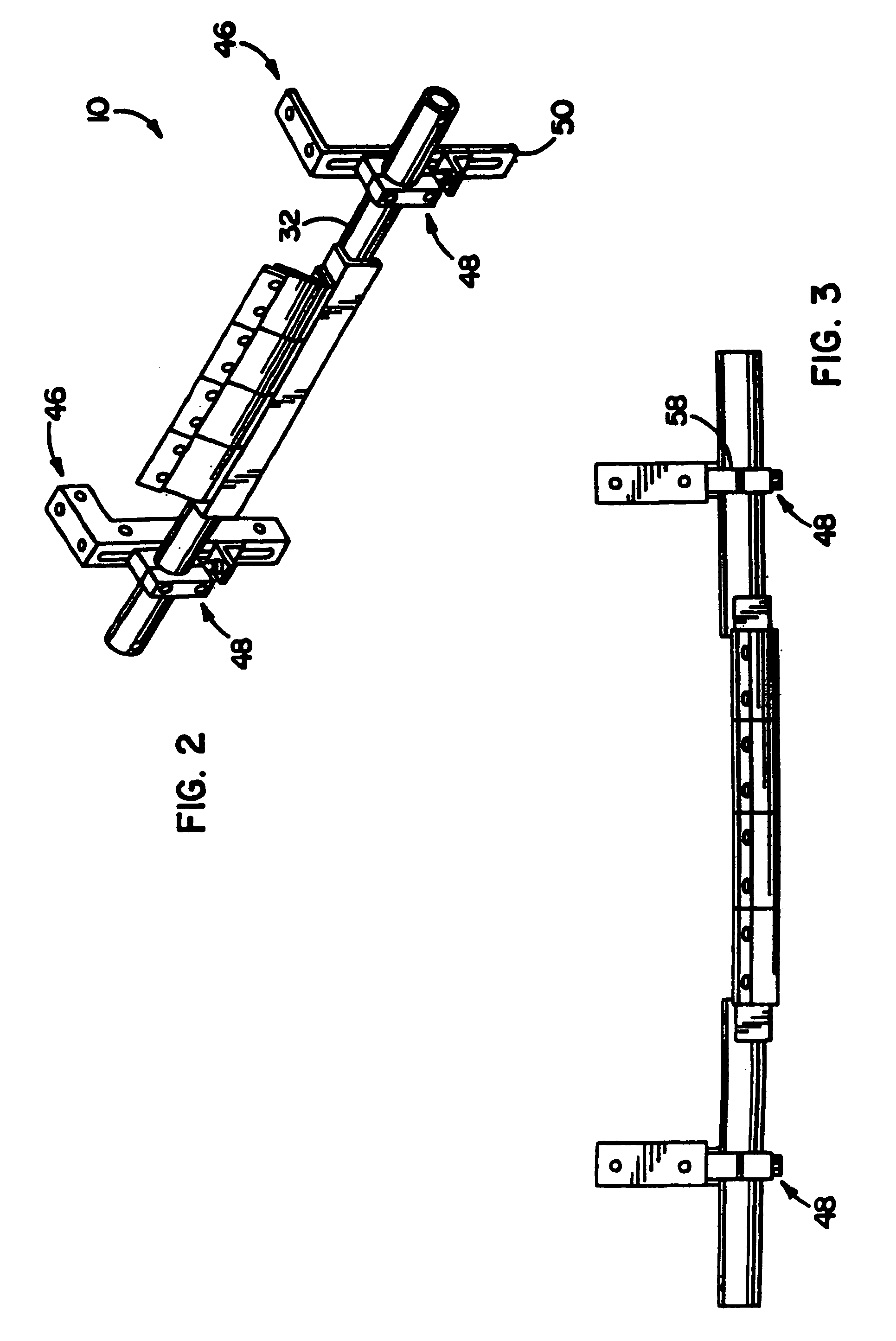Conveyor belt cleaning system
a belt cleaning and conveyor technology, applied in the direction of conveyor parts, cleaning, transportation and packaging, etc., can solve the problems of increasing the impact load of the cleaning blade, the angle of attack relative, and the problem of exacerbated problems, so as to reduce the load thereon
- Summary
- Abstract
- Description
- Claims
- Application Information
AI Technical Summary
Benefits of technology
Problems solved by technology
Method used
Image
Examples
Embodiment Construction
[0041]In FIG. 1, a cleaning assembly 10 for a conveyor belt 12 in accordance with the present invention is illustrated. The cleaning assembly 10 includes a belt cleaner having a scraper blade 14 that is attached to a blade mount member 16 which resiliently keeps the blade in engagement with the belt 12 as it is running. The blade mount member 16 is characterized by its ability to keep the blade 14 in substantially constant contact with the surface 12a of the conveyor belt 12 despite surface irregularities, i.e. deviations from a smooth, flat surface, that may be present thereon, while still allowing the blade 14 to resiliently shift away from the belt 12 when necessary to avoid taking the full brunt of high-impacts due to such surface irregularities. In this manner, the blade mount 16 is well-adapted to provide optimal cleaning efficiencies for the present cleaning assembly 10, and at the same time minimizes wear on the scraper blade 14 to increase the life thereof.
[0042]As can be s...
PUM
 Login to View More
Login to View More Abstract
Description
Claims
Application Information
 Login to View More
Login to View More - R&D
- Intellectual Property
- Life Sciences
- Materials
- Tech Scout
- Unparalleled Data Quality
- Higher Quality Content
- 60% Fewer Hallucinations
Browse by: Latest US Patents, China's latest patents, Technical Efficacy Thesaurus, Application Domain, Technology Topic, Popular Technical Reports.
© 2025 PatSnap. All rights reserved.Legal|Privacy policy|Modern Slavery Act Transparency Statement|Sitemap|About US| Contact US: help@patsnap.com



